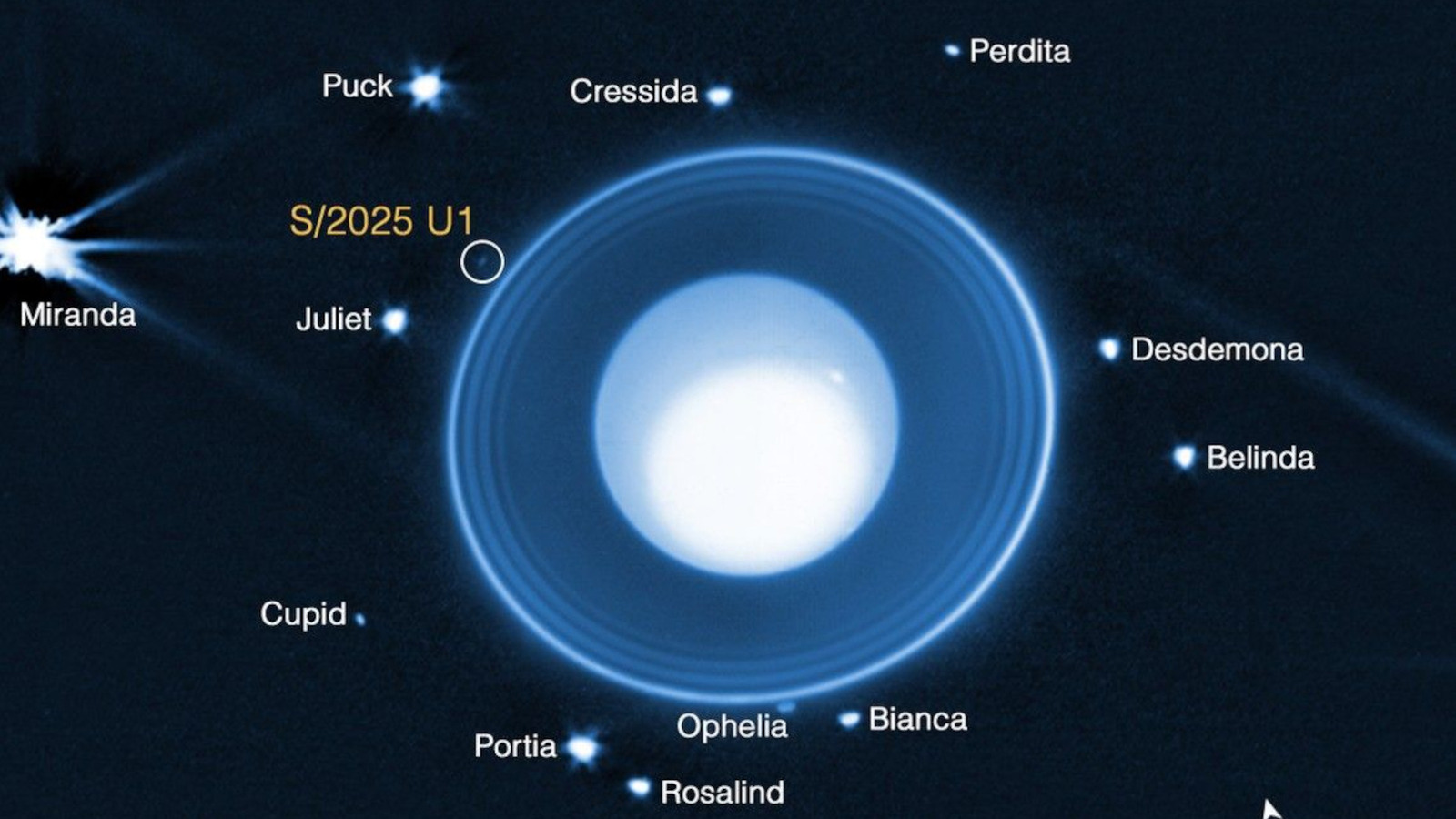A team of scientists from the Southwest Research Institute has identified a new moon in our solar system, utilizing images captured by the James Webb Space Telescope. This previously unknown moon, designated as S/2025 U1, is orbiting Uranus in what is described as a “nearly circular” path. Measuring just six miles in diameter, this small celestial body had evaded detection by even the most advanced telescopes, including the Voyager 2 spacecraft, which flew past Uranus 40 years ago.
The discovery was made possible through a series of ten exposures, each lasting 40 minutes, taken by Webb’s Near-Infrared Camera. The moon orbits approximately 35,000 miles from the center of Uranus, which is about 15% of the distance that our Moon is from Earth. This finding enhances our understanding of the complex system of moons and rings surrounding Uranus.
Insights into Uranus’ Unique Moons
The new moon joins a collection of 28 known moons, all of which are situated within the planet’s ring system. According to Matthew Tiscareno, a member of the research team, “No other planet has as many small inner moons as Uranus, and their complex inter-relationships with the rings hint at a chaotic history that blurs the boundary between a ring system and a system of moons.”
The mechanisms through which planets acquire their rings and moons are still an area of active research. It is hypothesized that moons can be torn apart by the gravitational influence of their neighboring planets. The resulting debris may form rings initially, and over time, this debris can coalesce to become a new moon. The discovery of S/2025 U1 provides a valuable opportunity to study this process further.
The Future of S/2025 U1
Currently referred to as S/2025 U1, the moon awaits a more fitting name. Uranus’ other moons carry names inspired by the works of William Shakespeare and Alexander Pope, such as Ophelia, Bianca, and Puck. The International Astronomical Union, responsible for naming celestial bodies, is expected to draw inspiration from the theatrical world before finalizing a name.
As the James Webb Space Telescope continues its mission from the second Lagrange point between the Earth and the Sun, it remains focused on capturing images in the darkest regions of space. NASA oversees the satellite, while scientific teams can propose missions as part of the General Observers program. This collaborative effort led to the discovery of the tiny moon S/2025 U1, illustrating how our understanding of the solar system continues to expand.
The identification of this new moon not only adds to the rich tapestry of Uranus’ satellite system but also underscores the ongoing exploration and discovery enabled by advanced technology. As researchers delve deeper into the mysteries of our solar system, it becomes clear that there is still much to learn about our cosmic neighborhood.
